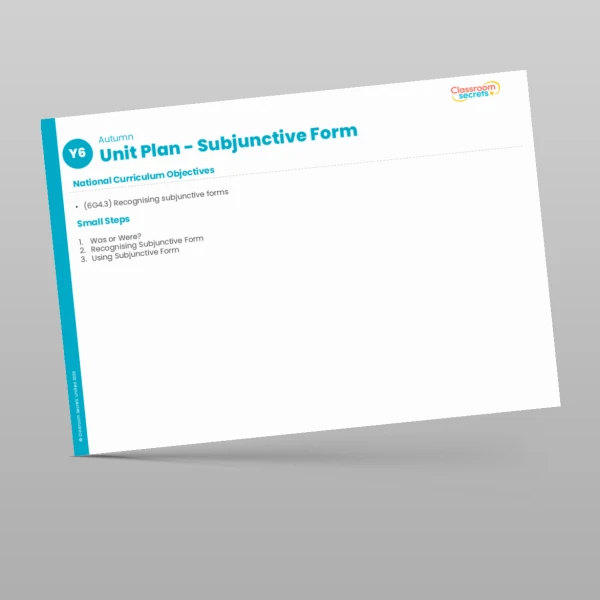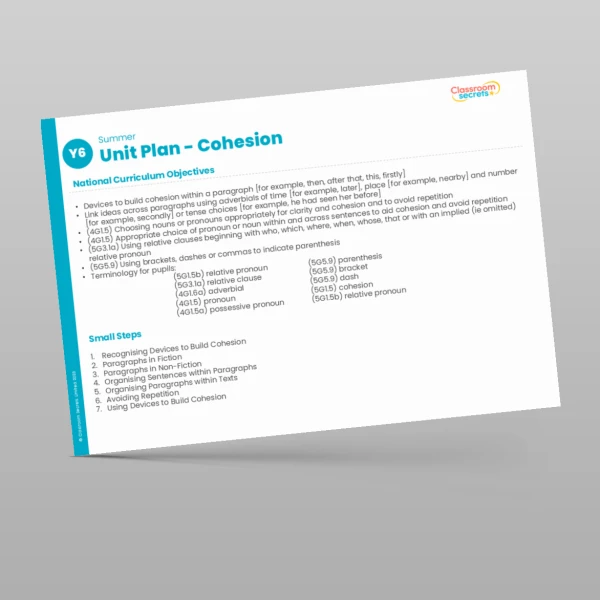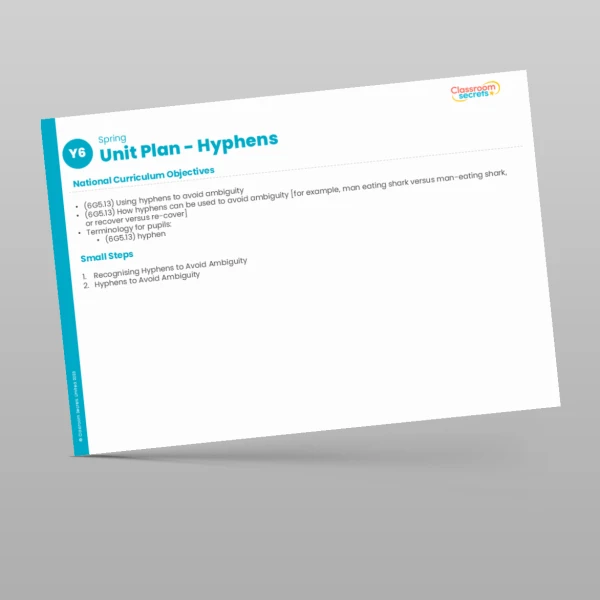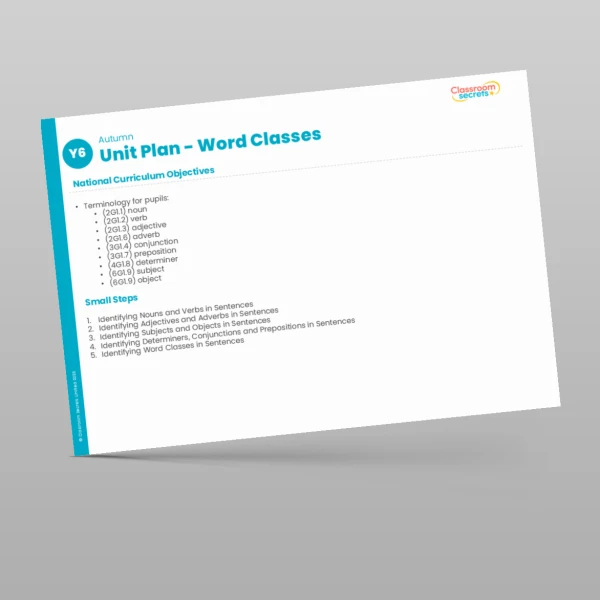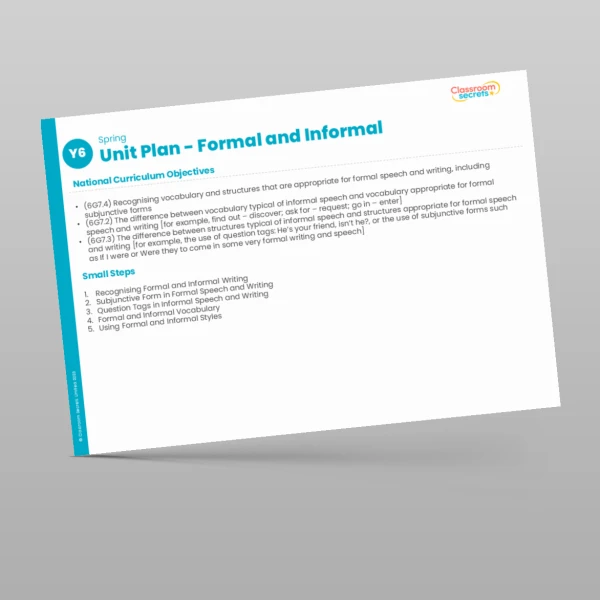

Explore the world of formal and informal language with this Year 6 Formal and Informal Unit Plan.
With a suggested timetable of GPS steps to be taught throughout the year, this resource breaks down the formal and informal objective into smaller and more manageable steps to help deliver a concise teaching sequence.
Each small step comes with notes and guidance for support as well as a set of focused questions to help get you started with your class. Resources are available to support this lesson, including teaching resources, worksheets and much more!
Curriculum Objectives
- Develop their understanding of the concepts set out in English appendix 2 by: Recognising vocabulary and structures that is appropriate for formal speech and writing, including subjunctive forms
- The difference between vocabulary typical of informal speech and vocabulary appropriate for formal speech and writing [for example, find out – discover; ask for – request; go in – enter]
- The difference between structures typical of informal speech and structures appropriate for formal speech and writing [for example, the use of question tags: He’s your friend, isn’t he?, or the use of subjunctive forms such as If I were or Were they to come in some very formal writing and speech]
Tags
Formal and Informal
Spring
6G7.4
6G7.2
6G7.3
Guidance
Year 6 Guidance
